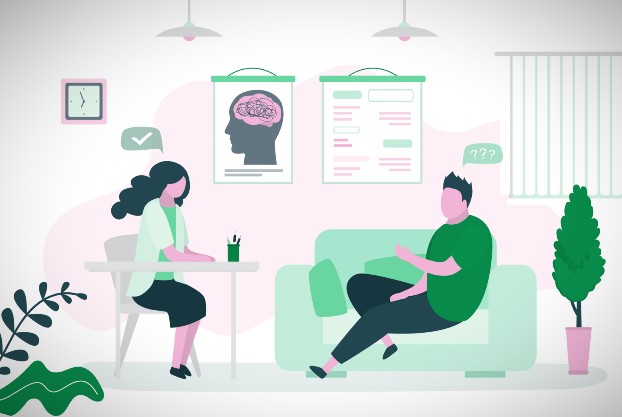
Cluster headaches are excruciating headaches that occur periodically and in clusters. You may find a cycle of having a headache attack and after that a relief period for your head. It’s a severe condition that requires a visit to a clinic and get services. You will find that the frequency of headaches can vary from day to day basis and from months to months. This problem is common between teenage and middle aged people. But it can strike up at any age. Update your knowledge on cluster headache attacks in this blog. If diagnosed, seek the services of the best neuro doctor’s clinic. Read on to find out more.
1. Symptoms
A cluster headache usually occurs without any warning. However, doctors have claimed to find certain conditions are developed that can give us the signs and symptoms of the cluster headache attack according to clinics. Such as:
- Pain behind or around one eye. It might flow to other areas of your face.
- Restlessness
- Excessive tearing
- On a particular side there might be redness or swelling in your eye, stuffy nose, or facial sweating.
- Your skin gets pale.
- Drooping eyelid on the concerned side
- Flashing of light in front of your eye just before headache attacks. Clinics state that this is a common symptom between people having a migraine.
If you find these symptoms or conditions, seek the services of the Best Neurology Specialist at once.
2. Causes
According to various clinic research, Mind Specialist Doctors find that cluster headaches can be caused by the following issues:
- The pain is insinuated by the dilation of the blood vessels that are responsible for transporting blood to the brain and face. Due to dilation, there is a pressure that builds upon the trigeminal nerve, which happens to transmit sensations from the face to the brain. It is undiscovered by clinics why the dilation occurs.
- The abnormalities with the hypothalamus can cause cluster headaches. It is a small area of the brain that regulates body temperature, blood pressure, sleep, and release of hormones.
- They can be caused by a sudden increase in the production of chemical histamine or serotonin.
3. Types of Cluster Headaches
There are two types of cluster headaches according to Neurology Specialists:
Episodic Cluster Headaches
They occur regularly within one week and one year. Succeeded by a headache-free period of at least a month or several months. Pain usually occurs at night.
Chronic Cluster Headaches
They occur regularly for longer than one year, followed by a headache-free period that lasts for less than one month. A person having an episodic cluster headache may later develop chronic cluster headaches on one side of the head. It’s advisable to visit a clinic for expert diagnosis.
4. Characteristics
The time of the cluster period can span up to several weeks to months. Usually, the timings and duration periods and conditions of the signs might be constant from period to period. They might even happen seasonally. It also depends upon which type of cluster headache you might be having. In the course of a cluster headache period:
- There is a higher frequency of getting headaches during the day
- The single headache can last up to 15 minutes to three hours
- They usually happen at the same time each day.
- Mostly they occur during the night.
- Sometimes the pain ends as soon it begins, with reducing intensity.
- After this painful condition, people might feel exhausted.
5. Differentiate between Cluster Headache from others
- Mostly cluster headache attacks start suddenly. A minority of people may experience some virtual disturbances, like flashing of light before the severe headaches kick in. These might be similar signs to people having migraines.
- A simple headache might become severe after some time. And the pain in the head usually lasts from half an hour to two hours.
- The pain happens on one side by originating behind or around the eye. In some cases, it might switch its side, say clinics. The pain flows through the other sides of the face to the neck and shoulders in a pattern.
6. When to see a doctor
- If you just started having the symptoms or conditions, and are having regular periodic headaches it might be a good time to see a Neurology Specialist or visit a clinic. It might not be the cluster headaches but, usually having a severe one can be the outcome of a serious issue. Such as a brain tumor or aneurysm.
- If you have a history of headaches that is changing into a pattern then consult your doctor or clinic if it’s getting more painful.
- After a head injury, if you’re getting severe headaches and suddenly the pain is shifting towards the neck and shoulders.
If you’re having these issues it might be the time that you should search a nearby clinic to consult for the betterment of your health.
7. Diagnosis
You can get the services of a Mind specialist doctor or a neurologist’s clinic. They will enquire about your symptoms and conduct a physical and neurological exam. They might monitor your headache for months. Clinics usually ask you to get an MRI or CT scan of your brain. To make sure and search that there are no serious underlying health reasons for your headache.
8. Treatment
Usually, there are some pain medicines that are used to treat these conditions. These medicines are used to prevent and relieve you from the pain. Clinics services usually prescribe:
- Triptan medications: A nasal spray medication
- Dihydroergotamine (DHE): An injected medication
Surgery
This would be considered as a last health alternative if no medicines or clinic treatments/services are working. Usually, surgery will disable the trigeminal nerve. If it’s successful it’s permanent relief from those painful headaches. And if gone wrong it can cause forever facial numbness advise the Best Neuro Doctors
9. Natural Treatment
Currently, there are not as many effective home remedies you can find that are proven to stop this condition. But a few of them can be of some help to a certain extent.
Deep Breathing exercise
Oxygen therapy is the main treatment for cluster headaches. Getting extra oxygen might relieve the one side headache.
Increasing Magnesium Levels
Low magnesium levels are connected with some sort of headaches. Although the research is limited to connect them to cluster headaches or its causes.
10. Risk Factors
According to research the people who are in a higher health risk category to get cluster headaches symptoms include:
- Men have a higher chance to get this problem than Women
- The Age bracket of 20-50-year-olds. Although it’s not like everyone is safe outside of this age.
- Smokers: Most people who tend to have cluster headaches are smokers.
- Family History: Having a family member experiencing this pain, might increase your chance of having it.
11. What to Avoid
If you’re in the health risk category you might want to prevent it by avoiding a few things like:
- Alcohol, smoke, and tobacco: Avoiding addictive substances has other health benefits as well.
- Strenuous activities
- Hot weather
- Hot baths
- Avoid foods that contain large amounts of nitrates, such as preserved meats. This benefits your health in the long run.
12. Interesting Facts
- These headache attacks or symptoms are more common in the fall in northern countries.
- Cluster headaches attacks happen in 1000 people mostly male. This health statistic makes it rare.
- Around 10-20 percent of people’s symptoms develop resistance to the treatment of drugs that are prescribed in the clinics.
Conclusion
Cluster headache attacks are not life-threatening, but there is no remedy or defined causes for them. By avoiding a few things they might become less frequent and reduce your chance of experiencing debilitating pain and other symptoms. Since the head is the most important part we should care about its health. It’s no shame for visiting a clinic for a checkup. Search for a specialist for the best treatment.








